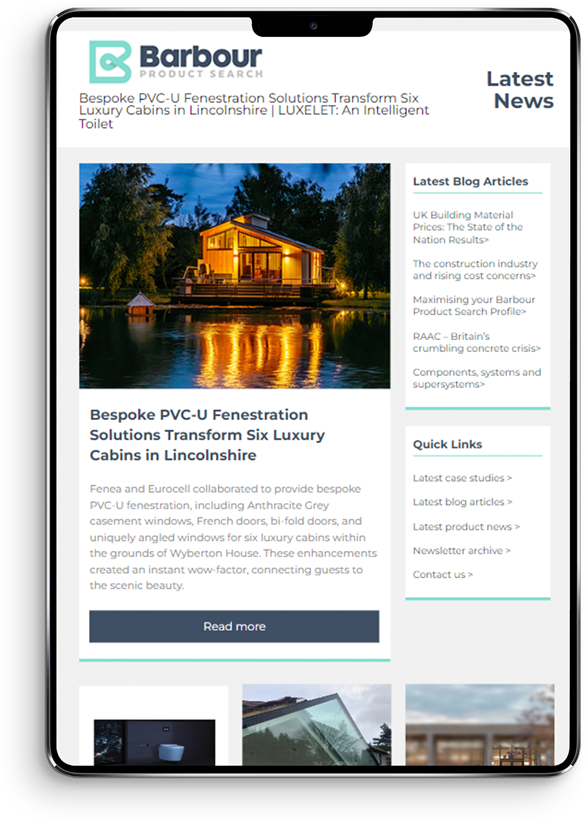Falls from height continue to be a major headache for the sector, yet every day contractors are employed to carry out essential rooftop repair and maintenance work. Vernon Barry, UK General Manager of Kee Safety Ltd, explains the importance for architects and other building specifiers to minimise these risks of falling by selecting the right choice of safety system.
Health and Safety Executive (HSE) figures reveal that over 1,000 people suffer serious injuries as a result of slips, trips and falls in the workplace each month. On top of that, over 4,000 major injuries such as broken bones or fractured skulls are reported to the HSE each year, with over half of these involving a fall from height. The latest statistics from the HSE reveal that 58 people died in 2007/08 as a result of falling from height.
In order to avoid the pain and cost involved in these unnecessary accidents, all those in the construction chain have a responsibility to plan and organise building works with workers' safety in mind.
The second phase of the HSE’s ‘Shattered Lives’ campaign helps to build awareness of the dangers of a slip, trip and fall from height and explain what can be done to indentify and manage these unnecessary risks. It also highlights what could happen to employee, employer and building owner, if the appropriate steps are not taken.
In fact, under the Work at Height Regulations 2005, as amended by the Work at Height (Amendment) Regulations 2007, there is a legal requirement for anyone who contracts others to access and maintain rooftop equipment to ensure proper safety precautions are in place. These Regulations replaced all the earlier regulations about working at height. They consolidated previous legislation on working at height and implement European Council Directive 2001/45/EC concerning minimum safety and health requirements for the use of equipment for work at height (the Temporary Work at Height Directive). Breaching these regulations can result in a legal prosecution and either a substantial fine or possible imprisonment.
In many cases, relatively simple steps can be taken to help avoid many of these falls, which can have devastating consequences for those involved.
Duty holders must follow a simple hierarchy for managing and selecting equipment for work at height. First they must avoid work at height where they can; where they cannot avoid work at height, they must use work equipment or other measures to prevent falls; and where they cannot eliminate the risk of a fall, they must use work equipment or other measures to minimise the distance and consequences of a fall should one occur. As a result, architects and the contractors they employ are responsible for carrying out risk assessments, a method statement and considering whether an alternative form of access would be safer.
To minimise the risk of danger the HSE recommends choosing safety guardrailing afforded by collective roof edge protection systems. When specifying a collective roof edge protection system for a free-standing flat roof application, architects and contractors have a multitude of criteria to consider, including installation simplicity and the often related issue of cost.
Installation simplicity equals speed, saving time and money. The latest modular roof edge protection systems on the market, such as the KeeGuard® system, can offer quick and easy assembly as standard, featuring three principal pre-fabricated components for fast installation. Fully modular and versatile enough to adapt to most roof edge profiles and level changes, sections can easily be taken down and re-erected as necessary. Because the system is free-standing, there is no risk of roof membrane penetration during installation. Typically, this type of system also allows for integral kickboard fixing to save even greater time and cost on site.
PVC base weights are also available on some systems, which bring a number of advantages particularly in making installation quicker and easier, thus saving time and money. Made from 100% recycled material, they provide an environmentally friendly alternative to conventional weights.
Having collective roof edge protection in place is one thing, making sure that it is correctly designed, installed, and therefore, effective is quite another. HSE inspectors are likely to question if the system actually complies with safety requirements as defined by a raft of legislation. Our free-standing KeeGuard® system complies with the requirements of HS (G) 33 – Safety in Roofwork, HSE Sheet 21 – “Working on Flat Roofs”, BS 6399: Part 2 1995 Wind Code and all other relevant Health and Safety, EU and CDM regulations. It is also fully tested to EN 14122 Part 3 and HSE Specialist Inspectors Report No 15 and all assemblies utilise fittings approved by TüV, one of Europe’s independent test houses. Not all free-standing systems offer this level of security for rooftop areas.
Without a correctly installed and tested system in place, those contracting work at height can be held responsible for the safety of personnel carrying out the work. In light of continuing incidents, HSE actions and commitments from the industry itself to reduce falls from height throughout the sector, it pays to be safe and secure.
View Kee Guard® Free Standing Roof Edge Protection PDF

